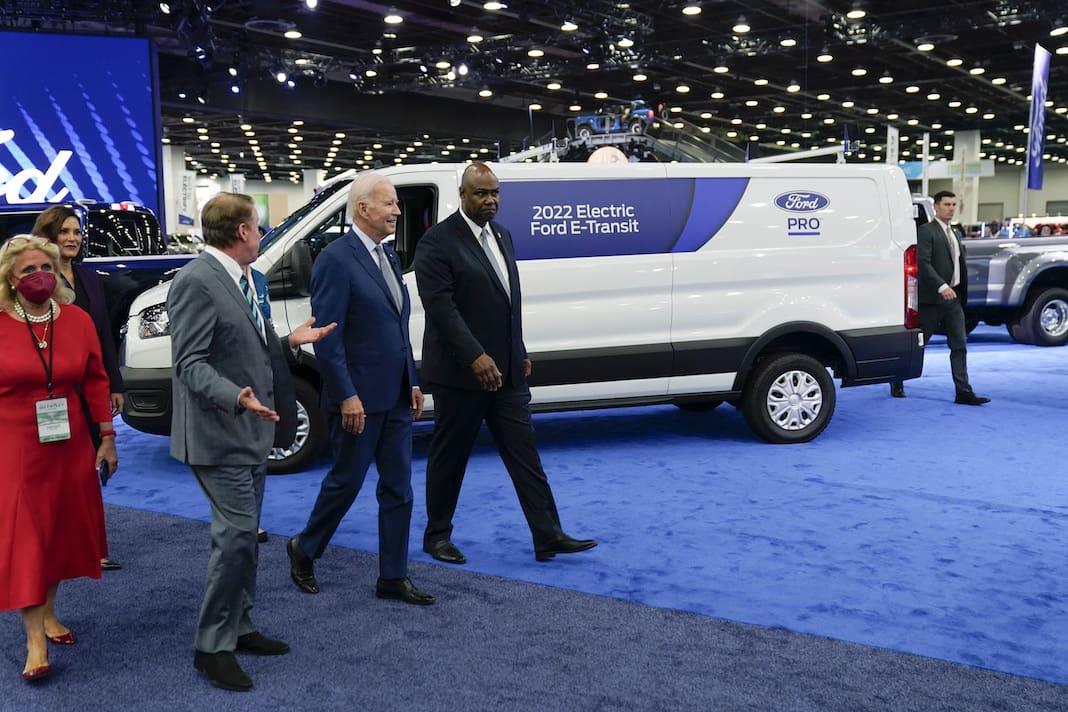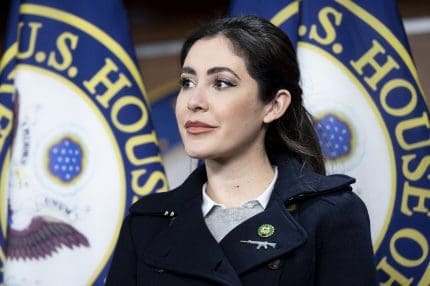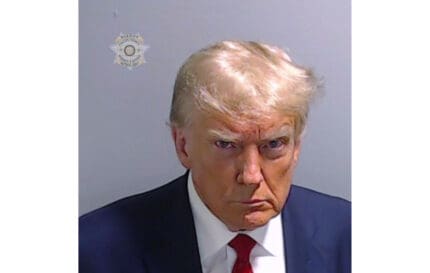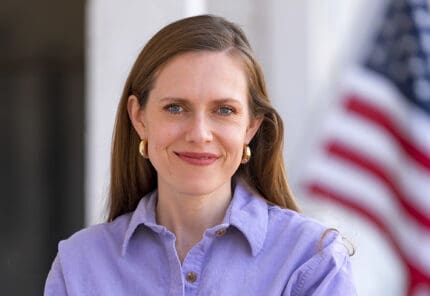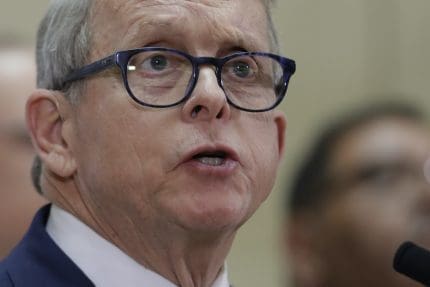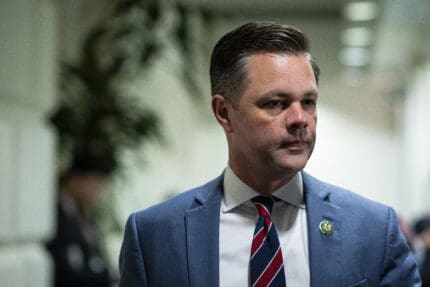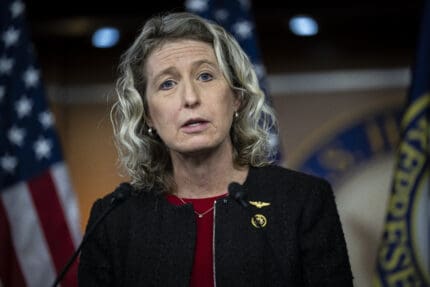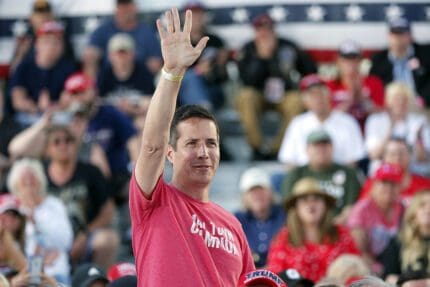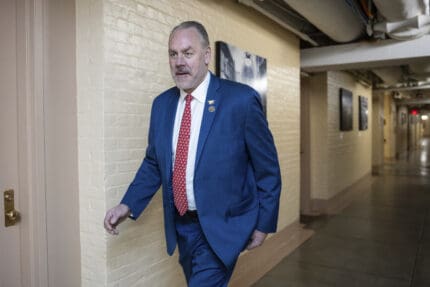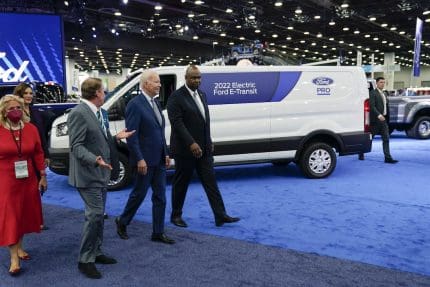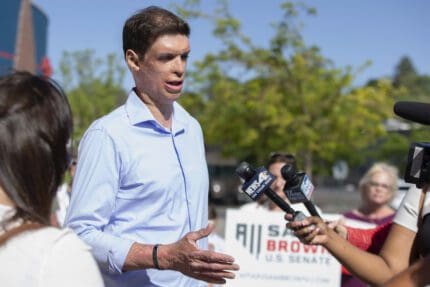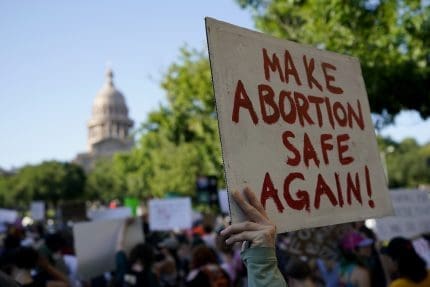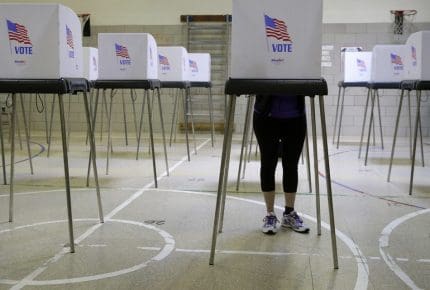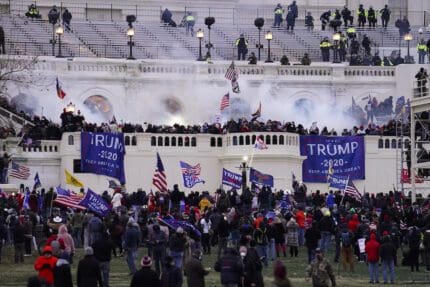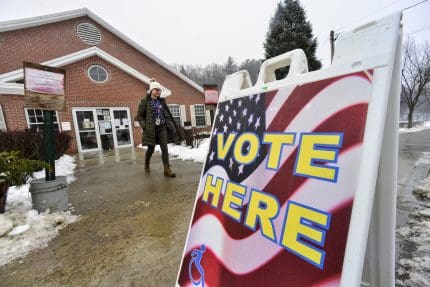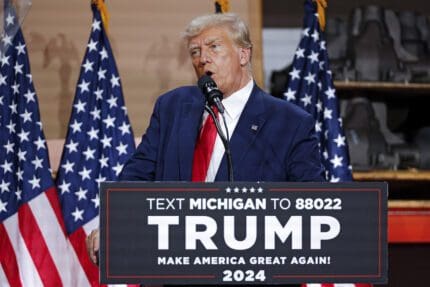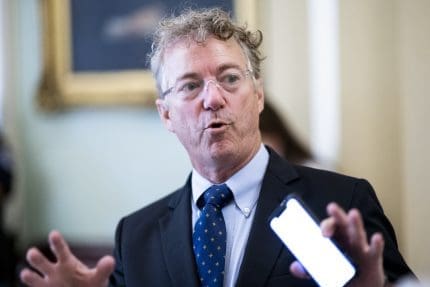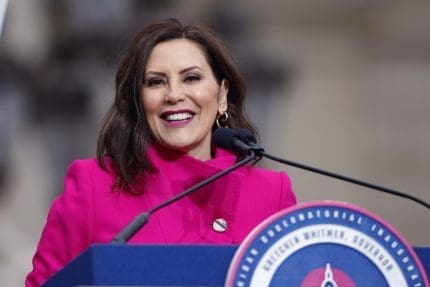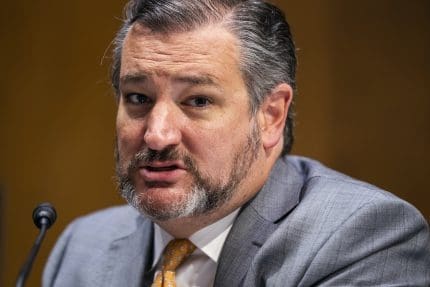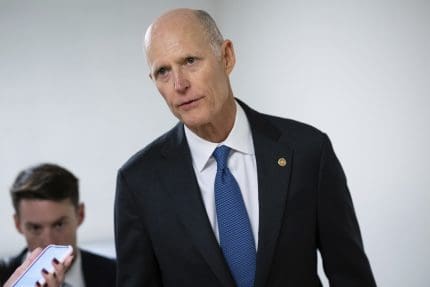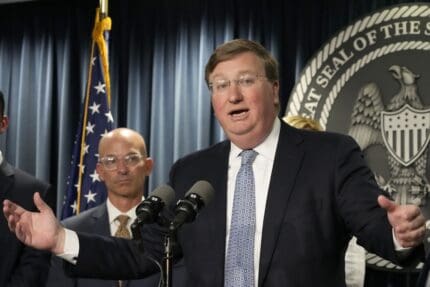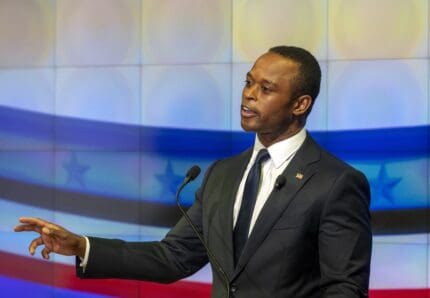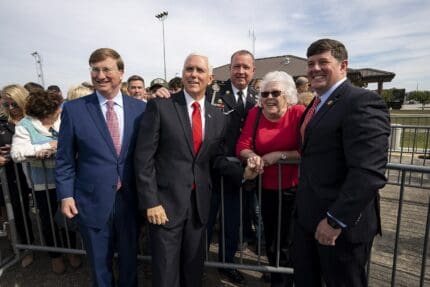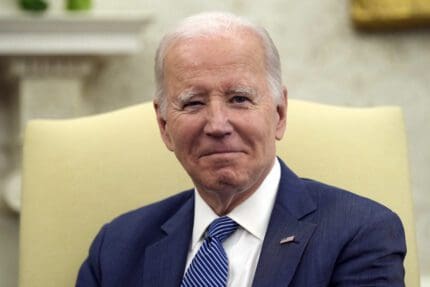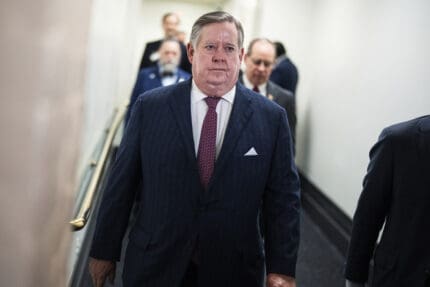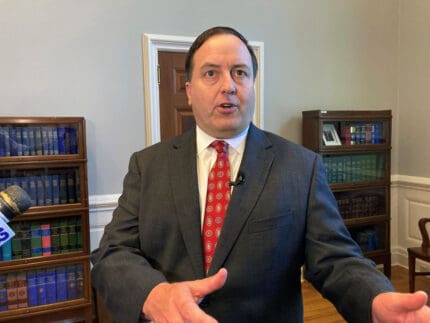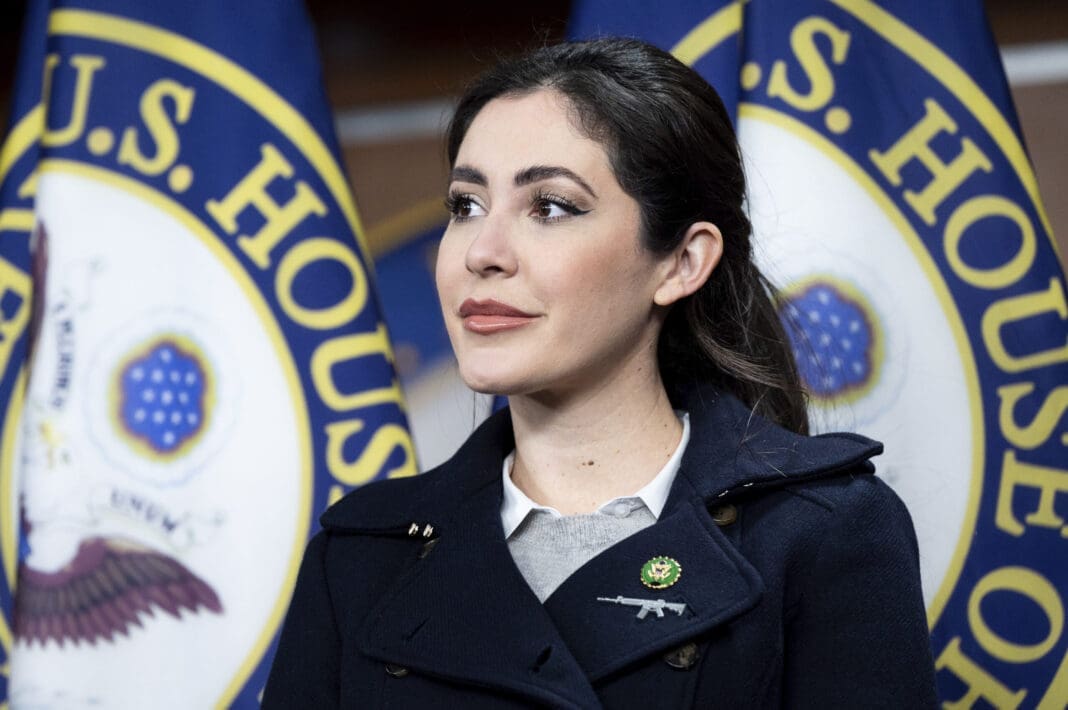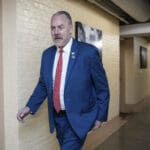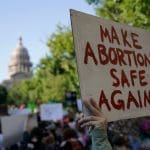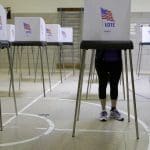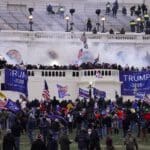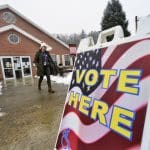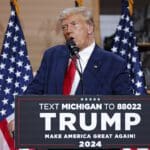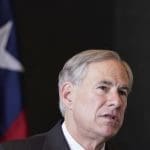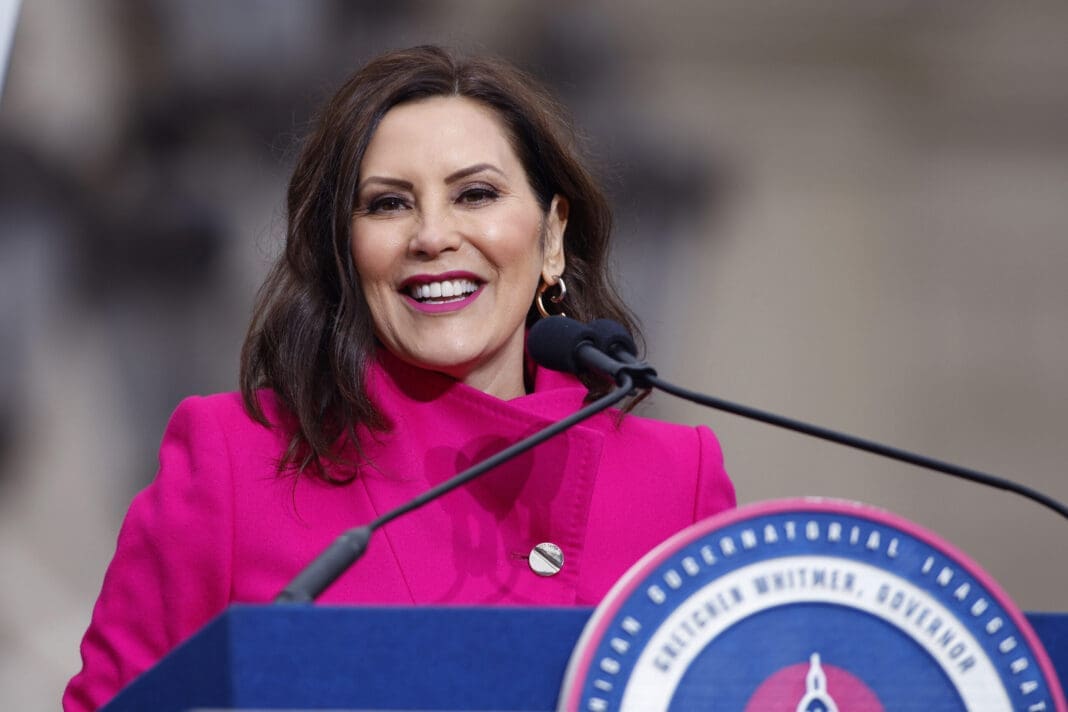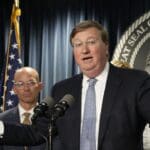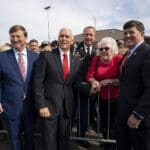20 years after 9/11, Muslim Americans still face excessive surveillance
Two decades out, harmful and discriminatory practices remain and draw upon defunct databases for prejudicial policing, experts say.
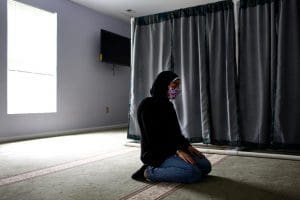
Twenty years ago, America underwent a paradigm shift.
Following the Sept. 11 attacks, air travel transformed. The Department of Homeland Security was created, leading to the mass deportations of hundreds of thousands of people. And the United States invaded Iraq and Afghanistan, instigating a generation of unrest across the region still unfolding to this day.
One overlooked change was the impact of that shift on the Muslim community, which has seen a steady and dramatic uptick in hate crimes since 2001. Discriminatory policing practices, hyper-surveillance, and targeted deportations have compounded their experience, placing many Muslims in a constant state of fear and instability.
Routine airport stops, mosque surveillance, and the infamous “terror” watchlist, which frequently targeted Muslims, live on today. While minor progress has been made in disbanding similarly discriminatory policies, advocates say unjust policing practices have grown more entrenched and institutionalized in the past two decades.
“So many of the structures and programs put in place after 9/11 that have disproportionately harmed Muslims and Muslim communities remain in place,” ACLU senior staff attorney Hugh Handeyside told The American Independent Foundation. “We are not seeing any sustained effort by the federal government to dismantle those programs and acknowledge the harms that they’ve visited on Muslims in America.”
The FBI in particular has been misguided, ineffectual, biased, and discriminatory in its operations, Mike German, a former FBI special agent who now works with the Brennan Center for Justice, said in an interview. Civil liberties advocates outlined the myriad programs implemented by federal agencies that have trickled down to the local level in the past two decades and kept Muslims shrouded in an aura of suspicion.
Surveillance state
Invasive screenings at airports, individual travel bans, and denying U.S. visas and passports are the fruits of the government’s terror “watchlisting” program, which has frequently targeted Muslims.
The FBI’s Terrorist Screening Center, created in 2003 and now with more than a million records, maintains a number of lists, including the No Fly List, which bars individuals from flying to or from the United States, and the Selectee List, which marks individuals for extra screening at the airport.
The criteria for designating terrorism suspects are entirely unknown to the public. The program has been known to wrongly flag innocent individuals in the past, including “This American Life” managing editor Sarah Abdurrahman, whose family was detained at the border for five hours in September 2013, and had their phones and cars searched with no explanation.
That model of hyper-surveillance relies on a presumption of guilt for Muslim Americans, Omar Farah, senior staff attorney at the Center for Constitutional Rights, said in an interview.
“[Post-9/11, there was] a shift in law enforcement from a practice of investigating and policing misconduct after it happens to a model of predictive policing that makes determinations on guilt and innocence and prospect of threat based fundamentally on crude stereotypes about Muslim identity and proclivity towards violence, and then operationalizing those through through a range of policing practices,” he said.
Starting in 2002, the Bush administration began requiring students, workers, tourists and other non-citizen visa holders to register when they entered the United States, as part of the now-defunct National Security Entry-Exit Registration System (NSEERS).
Registered individuals coming into the country were subject to fingerprinting, photographing, and interrogation. Once in the country for more than a month, they had to frequently report back to immigration officials, and those who failed to comply with all the guidelines were detained and deported.
The program affected travelers from 25 countries. All but one were majority Arab or Muslim.
Before President Barack Obama ended the program in 2011, NSEERS allowed immigration officials to monitor more than 80,000 travelers. The program had resulted in the deportation of nearly 14,000 people, without bringing about a single known terrorism conviction.
Obama’s successor, President Donald Trump, famously called for a Muslim “database” in 2016, sparking fears that NSEERS would be revived, though it ultimately remained shelved.
Discriminatory surveillance of Muslim communities took place at the local level too.
In 2002, the NYPD’s Demographics Unit, developed in partnership with the CIA, began monitoring Muslims across the New York metropolitan area, mapping neighborhoods with “ancestries of interest,” stationing officers outside of mosques, and sending in informants as “mosque crawlers” to report on sermons and record congregants’ conversations.
“The notion that the largest police force in the country was creating precinct-level maps that identified religious groups by their neighborhood, by restaurants that they frequented and that those those documents were circulating in secret within the NYPD is really chilling,” Farah said.
“There was really no part of Muslim life that fell outside of the scope of this work,” he added.
The division was finally disbanded in 2014, following extended litigation from advocacy groups.
Countering ‘extremism’
The NYPD was far from the only police force to partner with federal law enforcement in its goal to curb “radicalization,” a poorly defined and discredited theory that posits a linear path or profile for violent extremism among certain groups of people.
Every U.S. state has at least one fusion center, institutions dedicated to sharing intelligence between state, local, and federal law enforcement agencies. Critics have long charged that fusion centers overstep jurisdictional lines, deputize members of the private sector and military, and represent a broad overreach when it comes to data collection and privacy.
The ACLU calls fusion centers “the functional equivalent of creating a new national domestic intelligence agency” that often targets Muslims and collects erroneous intelligence which leads to them being interrogated or detained for suspicious activity.
Local agencies have also worked with FBI officers on Joint Terrorism Task Forces to collect info about peaceful protesters, a surveillance technique weaponized against Muslims, Black activists, and even groups like Greenpeace, that hearkens back to the Civil Rights movement of the 1960s, when groups like the Nation of Islam were marked for heightened scrutiny by the FBI.
The trickle-down of federal policies targeting Muslims went even further with the creation of Countering Violent Extremism Programs that, as the Brennan Center for Justice notes, asked community leaders, social workers, teachers, and public health providers to identify individuals they think might turn to terrorism.
Instituted under the Obama administration, CVE programs specifically focused on Muslim communities and looked suspiciously upon common activities among young people such as “questioning authority, experimenting with new identities, forming independent political views, showing solidarity with peoples living abroad, and expressing a desire to make a difference in the world,” according to the Muslim Justice League.
Once individuals were identified, federal prosecutors used the program to gather intelligence, recruit informants, and begin surveillance, despite a lack of proof that CVEs were effective.
Trump did away with the program upon taking office and established the Office for Targeted Violence and Terrorism Prevention in its stead, allocating $80 million in Department of Homeland Security grants to local agencies to combat counterterrorism, encouraging them to use the same identification methods that CVE relied on.
Biden promised to end the Trump-era program on the campaign trail, labeling it a “discriminatory” policy that “single[s] out Arab Americans” and vowing that any new policy would be based around actual data-based threats and not stereotypes. However, he installed the Center for Prevention Programs and Partnership in its place, which also provided millions in grants “to support diverse, innovative, and community-driven methods to prevent domestic terrorism while respecting civil rights and liberties.”
Experts say it’s the same policy with a new name.
“It’s basically the same programming,” German said. “The program gets a bad name, because its ineffective and counter-productive, but rather than acknowledging that their methodologies are flawed, they just changed the name.”
From Bush’s efforts to root out “counter-radicalization” to Biden’s Center for Prevention Programs and Partnership initiative, law enforcement’s profiling of Muslim communities has grown into a full-fledged infrastructure around targeted policing, German said.
‘Ideologically biased’ law enforcement
Two decades of prejudicial infrastructure were built, in part, through discriminatory training materials and patchwork guidance that continue to evolve today.
In 2011, Wired unearthed racist FBI training materials through Freedom of Information Act requests, including one document that charted Christianity, Judaism, and Islam for “militancy consideration” over time.
The chart claimed that Islam’s pious and devout believers have been at a near-maximum level of violence from the year 610 to present times, in contrast to Christianity and Judaism.
The FBI also taught counterterrorism agents that “mainstream American Muslims are likely to be terrorist sympathizers,” categorized the prophet Mohammed as a “cult leader,” and claimed Zakat, or the Islamic practice of giving to charity, was a “funding mechanism for combat.”
“We have created an ideologically biased law enforcement apparatus […],” German said. “It put law enforcement in the same ideological space as other racist and far-right militant groups.”
Additionally, the Justice Department’s guidance on race maintained loopholes that allowed officers to profile Muslim Americans for more than a decade.
From 2003 to 2014, the official guidance banned racial profiling with several significant exceptions: the rule did not apply to national security cases and only covered race and ethnicity, not religion, nationality, gender, or sexual orientation.
Then-Attorney General Eric Holder updated the guidance in 2014 under Obama, expanding it to include all of the above categories. But the guidance still maintains loopholes that allow for Transportation Security Administration and U.S. Customs and Border Protection agents to profile at airports and anywhere near the border, and does not apply to local law enforcement.
Eighty advocacy organizations, including Amnesty International USA, NAACP, and the National Immigration Law Center called on Obama to do away with the loopholes in a letter the following year.
“We had hoped the new Guidance would make clear once and for all that our government would not tolerate discriminatory policing practices,” the letter read. “…Unfortunately, there are still serious flaws with the new Guidance.”
The Biden administration did nothing to close those loopholes when it created a first-ever domestic terrorism strategy in June, though it did acknowledge that domestic violent extremists and white supremacists are America’s “most persistent and lethal threat.” It also left in place the government’s watchlisting system and expanded on social media surveillance, a practice advocates say is wielded against minority communities.
Attempts to address some of these problems are ongoing.
Were the George Floyd Justice in Policing Act to pass the Senate, for instance, it would formally end racial and religious profiling, and implement a number of other policing reforms, including barring chokeholds and ending qualified immunity for police officers. The legislation passed the House in March, though it faces a steep path in the Senate, where it needs 10 Republican “yes” votes to pass.
The fact that racial and religious profiling has been folded into the Floyd bill is no accident. Farah said racialized policing and hyper-surveillance of Muslim communities are deeply intertwined with the historic threat Black Americans have faced at the hands of police throughout the country’s long and painful past.
Twenty years out from 9/11, Farah said he has no real faith that law enforcement has made any meaningful changes to policing communities of color of late. But more heartening is the way the Black Lives Matter activists and members of the Muslim American community have found new ways to keep pushing ahead regardless.
“There is a really rich and organized and really pretty powerful set of social movements and organizations representing Muslim communities across the country that have taken to heart the lessons of targeting and and abusive detention practices, surveillance, and oppression that have followed 9/11 and are mobilizing and acting and demanding accountability and change,” he said.
“That, I find inspiring.”
Published with permission of The American Independent Foundation.
Recommended

Biden campaign launches new ad focused on Affordable Care Act
Former President Trump has said he wants to do away with the popular health care law.
By Kim Lyons, Pennsylvania Capital-Star - May 08, 2024
Trump leaves door open to banning medication abortion nationwide
Donald Trump is planning to release more details in the weeks ahead about how his administration would regulate access to medication abortion, according to comments he made during a lengthy interview with Time magazine published Tuesday.
By Jennifer Shutt, States Newsroom - April 30, 2024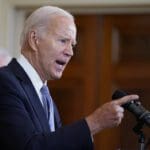
Biden on abortion rights: President expects to give speech Tuesday on new Florida 6-week ban
‘Having the president of the United States speaking out loud and with confidence about abortion access is a great thing’
By Mitch Perry, Florida Phoenix - April 22, 2024







